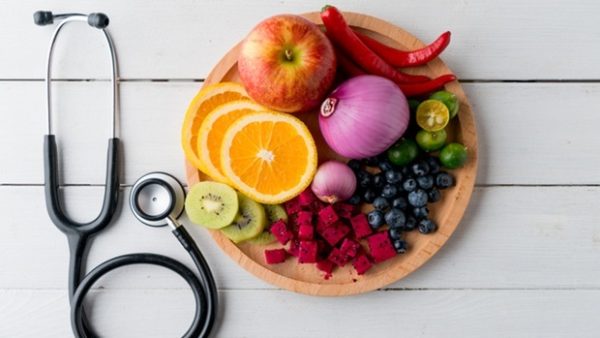Gastroparesis
Gastroparesis is an uncommon medical disorder that causes abdominal pain, nausea, and vomiting due to sluggish stomach emptying.
Diet is a mainstay of gastroparesis treatment, according to the American College of Gastroenterology, and it’s also a natural treatment. Doctors can prescribe medication and undertake medical procedures to help patients with gastroparesis symptoms, but these treatments are most effective when patients follow a gastroparesis diet that limits slow-digesting foods.
Focus on Nutrition
Gastroparesis causes people to feel full after only a few bites because the food does not travel through the stomach quickly enough. As a result, it’s critical that those few bites provide your body with the nutrition it requires rather than empty calories. Good alternatives include lean meats, eggs, cooked vegetables, bananas, canned fruits, rice, potatoes (without the peel), and yoghurt. Low-nutrition cookies, cakes, and prepared snack foods (such as chips) should be avoided.
Avoid High-Fiber Foods
The majority of Americans are encouraged to consume more high-fiber meals. High-fiber foods, on the other hand, should be avoided if you have gastroparesis because they are particularly difficult for the body to digest. Whole grain cereals, dried beans (even when cooked), lentils, nuts and seeds, Brussels sprouts, lettuce and other leafy greens, peas, green beans, apples, berries, oranges, persimmons, figs, and coconut are all foods to avoid if you have gastroparesis.
If you’re craving an apple, substitute applesauce. It’s easier to digest because it’s processed and doesn’t include the skin.
A Blender May be Your Best Friend
People with gastroparesis can usually manage liquids better than solids in their stomachs. So, if you’re having trouble absorbing enough nutrients from solid food or are experiencing uncomfortable Gastroparesis symptoms while you eat, puree or liquify your food with a kitchen blender.
Cut the food into little bits first, then add the liquid and purée. Fruit juice can be used to purée bits of fruit into a drinking, digestible liquid; broth can be added to meats and meat recipes. Water can also be used.
Eat 5 to 6 Small Meals Per Day
Instead of gorging yourself at breakfast, lunch, and supper, it’s best to eat little portions of food throughout the day. Your stomach gets a chance to process the food you eat before your next meal if you spread your food intake out.
The International Foundation for Gastrointestinal Disorders recommends a light breakfast (cream of wheat and scrambled eggs are good options); a liquid breakfast shake in the middle of the morning; a small soup and sandwich lunch; a mid-afternoon fruit shake; dinner with lean protein, fruit, and vegetables; and a custard before bed.
Avoid Alcohol and Soda
Alcoholic beverages, such as beer, wine, and spirits, are mostly empty calories, meaning they take up stomach space but don’t provide any important nutrients. Furthermore, consuming alcohol can result in severe stomach pain. Soda is also not a good choice because the carbonation might create further bloating and discomfort.
Coffee, tea, water, sports drinks, and non-carbonated, sugar-free drinks are all better beverage options. Small amounts of skim milk and pulp-free fruit juice may also be tolerated.
Steer Clear of Hard-to-Chew Foods
Any food that is tough to chew is also difficult to digest. You should stay away from:
- Popcorn
- Corn
- Nuts
- Broccoli
- Seeds
Choose the easiest-to-eat version of a food whenever possible. Choose canned pears instead of raw pears, for example. Pear sauce is a far superior option. Finely mashed potatoes are preferable to roasted potatoes, and pureed soups are preferable to lumpy stews.
Move After Eating
Digestion is improved by staying upright for at least an hour after eating. Walking has also been shown to accelerate stomach emptying, so why not go for a walk after your meal? Rather than curling up on the couch, put on your sneakers and go for a walk around the block.
When your stomach hurts or you’re nauseated and vomiting, exercise may seem impossible, but anecdotal research suggests that increasing physical activity can help with gastroparesis symptoms. You might wish to work with a trainer that specialises in chronic sickness.
Limit Fatty Foods
Stomach emptying is delayed by fat. (Cheese is constipating because it is a high-fat food.) Many healthcare experts advise persons with gastroparesis to limit their fat intake to no more than 50 grammes per day; however, some patients won’t be able to handle even that much at first.
Fried meals, such as French fries and fried chicken, should be avoided. Meats and vegetables that have been baked or broiled (without the skin) are easier to digest. Choose the lowest-fat form of a food whenever possible. Skim milk is preferable than full or 2% milk.




